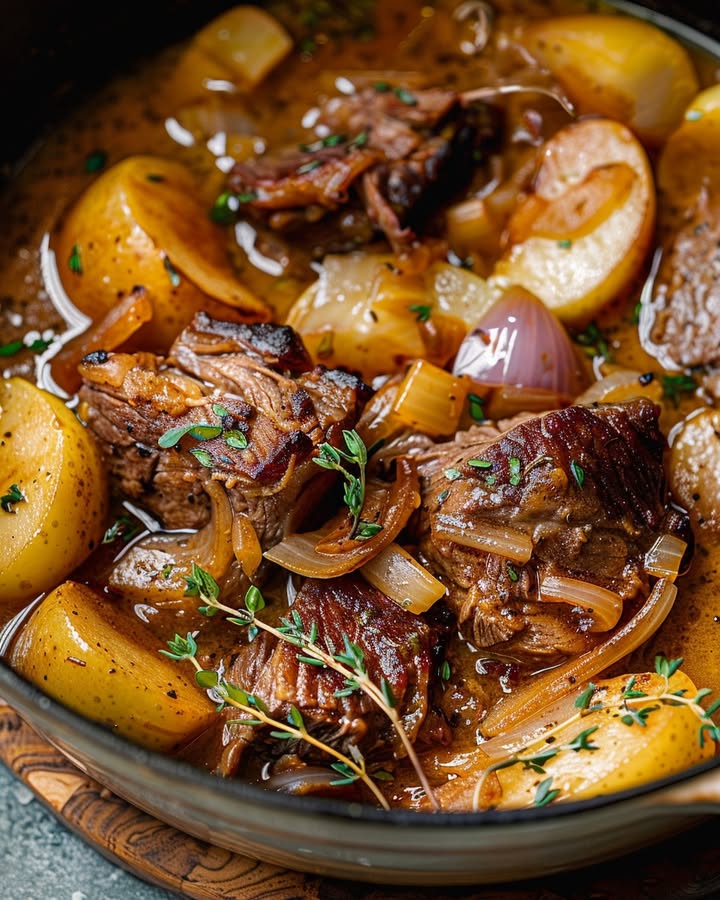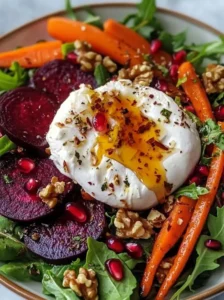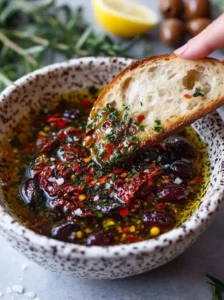Best Cider Braised Beef with Apples and Onions: A Hearty Fall Comfort Dish
When autumn arrives, nothing satisfies like the Best Cider Braised Beef with Apples and Onions. This dish combines tender beef with sweet apples and caramelized onions in a rich cider-based sauce. The slow cooking process allows flavors to meld perfectly, creating a meal that warms you from the inside out.
The secret to this Best Cider Braised Beef with Apples and Onions lies in the balance of flavors. Tart apples cut through the richness of the beef, while onions add depth and sweetness. Cider provides a subtle fruitiness that elevates the entire dish. Serve it over mashed potatoes or crusty bread for the ultimate comfort food experience.
Quick Recipe Highlights
- Flavor Profile: The Best Cider Braised Beef with Apples and Onions offers a perfect blend of savory and sweet. The beef develops deep umami notes while the apples and onions add natural sweetness.
- Texture: After hours of braising, the beef becomes fork-tender. The apples soften but retain some structure, creating pleasant textural contrast.
- Aroma: As this dish cooks, your kitchen will fill with the comforting scents of caramelizing onions, warming spices, and apple cider.
- Visual Appeal: The rich brown beef contrasts beautifully with golden apples and onions. A sprinkle of fresh herbs adds vibrant color before serving.
- Skill Level Needed: While this recipe requires some patience, the techniques remain straightforward. Beginners can achieve excellent results by following the steps carefully.
- Special Equipment: You’ll need a heavy-bottomed Dutch oven or braising pan with a tight-fitting lid for best results.
Recipe Overview
- Difficulty Level: This Best Cider Braised Beef with Apples and Onions earns an intermediate rating due to the long cooking time and need for occasional attention. However, the active cooking time remains minimal.
- Category: This dish works perfectly as a main course for family dinners or special occasions. It falls into both comfort food and seasonal recipe categories.
- Cuisine: While braised beef appears across many cultures, this version draws inspiration from traditional European and American farmhouse cooking.
- Cost: Using affordable chuck roast keeps costs reasonable. The remaining ingredients consist of pantry staples and seasonal produce.
- Season: Fall and winter provide ideal conditions for enjoying this hearty braised dish. Apples reach peak sweetness during these months.
- Occasion: Serve this comforting meal at casual family gatherings, holiday dinners, or anytime you crave substantial, flavorful food.
Why You’ll Love This Recipe
The Best Cider Braised Beef with Apples and Onions delivers exceptional taste with minimal effort. While the beef braises, you can attend to other tasks or simply relax. The long cooking time transforms tougher cuts into succulent, flavorful meat that falls apart at the touch of a fork.
Nutritionally, this dish provides high-quality protein and essential nutrients from the beef. Apples contribute fiber and vitamin C, while onions offer antioxidants. The cooking method preserves these nutritional benefits while developing deep, satisfying flavors.
For entertaining, this recipe shines because it actually improves when made ahead. The flavors continue developing as the dish rests, making it perfect for stress-free hosting. Guests will rave about the complex taste profile and tender texture.
Cost-conscious cooks appreciate how this recipe maximizes affordable ingredients. Chuck roast offers excellent flavor at a fraction of premium cuts’ prices. Seasonal apples and basic aromatics keep the ingredient list budget-friendly without sacrificing quality.
Finally, the versatility of this dish makes it a keeper. Leftovers transform into delicious sandwiches, pot pies, or pasta toppings. The rich cooking liquid becomes an incredible base for soups or sauces.
Historical Background and Cultural Significance
Braising meat with fruit dates back centuries across Europe. Before modern refrigeration, combining meat with acidic ingredients helped preserve and tenderize tougher cuts. The Best Cider Braised Beef with Apples and Onions carries forward this practical tradition with contemporary refinement.
In cider-producing regions like Normandy and England, cooks frequently paired beef with local hard cider. The alcohol and acidity helped break down connective tissues while adding distinctive flavor. Immigrants brought these techniques to America, adapting them to local ingredients.
Apples have long been a staple in North American cooking. Early settlers planted orchards wherever they settled, making apples readily available for both sweet and savory applications. Combining them with beef created hearty, satisfying meals for farm families.
Today, chefs rediscover these traditional combinations, elevating them with modern techniques. The Best Cider Braised Beef with Apples and Onions represents this bridge between historical methods and current tastes.
Ingredient Deep Dive
Chuck roast forms the foundation of this dish. This well-marbled cut from the shoulder contains abundant collagen that melts during braising, creating that signature tenderness. Look for roast with even marbling and bright red color. For substitutions, consider brisket or short ribs.
Fresh apples should be firm with no bruises. Tart varieties like Granny Smith hold their shape well during cooking. For sweeter results, try Honeycrisp or Fuji. Always taste your apples before cooking to gauge their sweetness level.
Yellow onions work best for this recipe, caramelizing beautifully during cooking. Their natural sugars balance the cider’s acidity. When selecting onions, choose firm bulbs with dry, papery skins. Store them in a cool, dark place with good air circulation.
Hard apple cider provides the braising liquid. Choose a dry, still cider without added sugars. The alcohol cooks off during braising, leaving behind concentrated apple flavor. For non-alcoholic versions, substitute apple juice mixed with a tablespoon of vinegar.
Common Mistakes to Avoid
- Searing the beef improperly can lead to lackluster flavor. Always pat the meat dry and use high heat to develop a deep brown crust.
- Overcrowding the pan prevents proper browning. Cook the beef in batches if necessary to maintain pan temperature.
- Using apples that turn to mush during cooking creates unappealing texture. Select firmer varieties that retain some structure.
- Skimping on cooking time results in tough meat. The collagen needs sufficient time to break down completely.
- Adding salt too early can make the beef dry. Season in layers throughout the cooking process.
- Not skimming the fat from the braising liquid leaves the sauce greasy. Remove excess fat before serving.
- Using low-quality cider impacts the final flavor. Choose a cider you would enjoy drinking on its own.
- Lifting the lid too frequently during braising causes heat loss and extends cooking time unnecessarily.
Essential Techniques
Proper browning creates the flavor foundation for the Best Cider Braised Beef with Apples and Onions. Use high heat and avoid moving the meat until a crust forms. This Maillard reaction develops complex flavors that permeate the entire dish.
Controlling the braising temperature proves crucial. The liquid should maintain a gentle simmer, not a rolling boil. This slow cooking breaks down connective tissues without making the meat stringy. Check occasionally to ensure proper heat levels.
Deglazing the pan captures all the flavorful browned bits. After searing the beef, use the cider to loosen these fond from the pan bottom. This step incorporates maximum flavor into the braising liquid.
Resting the meat before serving allows juices to redistribute. While the recipe finishes cooking, remove the beef and let it rest covered for 10-15 minutes. This prevents dryness when slicing.
Pro Tips for Perfect Best Cider Braised Beef with Apples and Onions
- Cut the beef into uniform pieces for even cooking. This ensures all pieces reach perfect tenderness simultaneously.
- Layer flavors by seasoning at multiple stages. Add salt when browning, again when adding liquids, and finally before serving.
- Reserve some fresh apples to add toward the end of cooking. This provides textural contrast to the softened braised apples.
- Strain and reduce the braising liquid for an elegant sauce. This concentrates flavors and creates a luxurious finish.
- Use a fat separator to remove excess grease from the sauce while preserving all the flavorful juices.
- For deeper flavor, prepare the dish a day ahead and reheat before serving. The resting time allows flavors to meld beautifully.
Variations and Adaptations
For regional variations, consider adding mustard to the Normandy-style version. German adaptations might include caraway seeds, while British versions often feature thyme and bay leaves.
Seasonal adaptations allow year-round enjoyment. In spring, substitute pears for apples and add fresh peas. Summer versions could incorporate cherries or peaches for brighter flavors.
Dietary modifications make this dish accessible to more people. For gluten-free needs, ensure your cider contains no barley. Paleo followers can omit any added sweeteners.
Flavor variations let you customize to taste. Add warming spices like cinnamon or star anise for holiday versions. Smoked paprika or chipotle introduces subtle heat.
Presentation alternatives range from rustic to elegant. Serve family-style in the braising pot or plate individually with artistic garnishes.
Serving and Presentation Guide
Traditional plating places the beef at the center with apples and onions arranged attractively around it. Spoon generous amounts of sauce over everything, allowing some to pool on the plate.
Garnishing options include fresh thyme sprigs, apple slices fanned decoratively, or crispy fried onions. A drizzle of reduced cider syrup adds visual appeal and intensified flavor.
Classic accompaniments include buttery mashed potatoes, roasted root vegetables, or crusty bread for soaking up the delicious sauce. A simple green salad provides refreshing contrast.
Modern presentations might feature individual servings in shallow bowls with the beef shredded over polenta. Garnish with microgreens for contemporary flair.
Temperature matters when serving. Ensure plates are warm but not scalding hot. The beef should be piping hot throughout while the sauce remains fluid.
Wine and Beverage Pairing
Full-bodied red wines complement the richness of the Best Cider Braised Beef with Apples and Onions. Try a Syrah or Malbec with enough structure to stand up to the dish.
For white wine lovers, an oaked Chardonnay mirrors the buttery notes in the sauce. The wine’s acidity cuts through the dish’s richness.
Non-alcoholic options include sparkling apple cider or ginger beer. Both provide refreshing contrast to the savory flavors.
Coffee lovers might enjoy a medium roast with chocolatey notes. The bitterness balances the dish’s sweetness beautifully.
Serve beverages slightly cooler than room temperature to refresh the palate between bites of this hearty dish.
Storage and Shelf Life
Refrigerate leftovers in airtight containers for up to four days. The flavors actually improve during the first day or two of storage.
For freezing, portion the cooled dish into freezer-safe containers. Remove as much air as possible to prevent freezer burn. Consume within three months for best quality.
When reheating, do so gently over low heat. Add a splash of water or cider if the sauce seems too thick.
Signs of spoilage include off odors, mold growth, or significant texture changes. When in doubt, discard questionable portions.
For food safety, cool the dish quickly before refrigerating. Divide large quantities into smaller containers to promote rapid cooling.
Make Ahead Strategies
You can prepare the entire dish up to three days in advance. The extended resting time allows flavors to develop even further.
For partial preparation, brown the beef and cook the aromatics a day ahead. Store them separately in the refrigerator until ready to braise.
When making ahead, undercook the apples slightly. They’ll finish softening during reheating, preventing mushiness.
For last-minute assembly, prepare the braising liquid in advance. This reduces active cooking time when you’re ready to serve.
Always reheat gently to preserve texture. Consider adding fresh herbs just before serving to brighten flavors.
Scaling Instructions
When doubling the recipe, use a larger pot but maintain the same cooking time. The increased volume may require slightly longer to reach optimal tenderness.
For halving the recipe, reduce the braising time by about 30 minutes. Check for doneness earlier than the full recipe indicates.
Equipment adjustments become necessary when scaling. A standard Dutch oven works for up to double batches. Beyond that, consider using multiple pots or a roasting pan.
Timing modifications help when cooking larger quantities. Allow extra time for browning meat in batches without overcrowding the pan.
Storage considerations change with scale. Large batches require more refrigerator space and careful cooling procedures.
Nutritional Deep Dive
This dish provides high-quality protein from the beef, essential for muscle maintenance and repair. The slow cooking makes the nutrients more bioavailable.
Apples contribute fiber, particularly pectin, which supports digestive health. Their polyphenols offer antioxidant benefits as well.
Onions contain quercetin, a flavonoid with anti-inflammatory properties. Cooking enhances the availability of some beneficial compounds.
The dish’s fat content comes primarily from the beef’s marbling. While rich, these fats contribute to satiety and flavor absorption.
For portion control, aim for about 6 ounces of beef per serving with generous vegetables. This balances satisfaction with moderation.
Dietary Adaptations
For gluten-free needs, verify all ingredients, particularly the cider. Some hard ciders may contain barley-based additives.
Dairy-free adaptations require no changes to the base recipe. Simply omit any butter-based garnishes if serving to lactose-intolerant guests.
Low-carb versions can reduce the apple quantity slightly and serve over cauliflower mash instead of potatoes.
Paleo followers should ensure the cider contains no added sugars or preservatives. Traditional hard ciders often meet these criteria.
For Whole30 compliance, omit the alcohol and use fresh apple juice with apple cider vinegar instead.
Troubleshooting Guide
If the beef turns out tough, it likely needed more cooking time. Return it to the pot with additional liquid and continue braising gently.
Overly sweet results can be balanced with a splash of vinegar or mustard. Taste and adjust seasonings carefully.
When the sauce seems too thin, remove the solids and reduce the liquid over higher heat. Alternatively, thicken with a cornstarch slurry.
Burnt flavors require starting over, unfortunately. Pay close attention to heat levels during browning and braising.
If apples disintegrate completely, use firmer varieties next time or add them later in the cooking process.
Recipe Success Stories
Home cooks report this recipe becoming a family favorite, especially during cooler months. Many appreciate how it makes tough cuts tender and flavorful.
Entertainers love serving this dish because it impresses guests while allowing the host to enjoy the party. The make-ahead aspect proves invaluable.
Some creative adaptations have emerged, including adding root vegetables to the braise or incorporating different spice blends.
Photography tips suggest capturing the dish in natural light with rustic table settings. The contrast between the dark beef and golden apples makes for striking images.
Many note how leftovers transform beautifully into new meals, from pot pies to creative sandwiches.
Frequently Asked Questions
Can I use a slow cooker for this recipe? Absolutely. After browning the beef and vegetables, transfer everything to a slow cooker. Cook on low for 8 hours or high for 4-5 hours.
What cut of beef works best? Chuck roast remains the ideal choice for braising. Its marbling and connective tissue break down beautifully during long cooking.
Can I make this without alcohol? Yes, substitute equal parts apple juice and chicken broth, adding a tablespoon of apple cider vinegar for acidity.
How do I know when the beef is done? The meat should shred easily with a fork. If it resists, continue cooking and check every 30 minutes.
Can I freeze leftovers? Yes, this dish freezes well for up to 3 months. Thaw in the refrigerator before reheating gently.
What apples work best? Firm, tart varieties like Granny Smith hold up well. For sweeter results, try Honeycrisp or Braeburn.
Can I prepare this in advance? Yes, it actually improves when made a day ahead. Reheat gently before serving.
What should I serve with this? Mashed potatoes, polenta, or crusty bread all work beautifully. A simple green salad provides contrast.
How can I make the sauce thicker? Remove the solids and reduce the liquid over high heat. Alternatively, mix a cornstarch slurry and whisk it in.
Can I use sweet onions instead? Yes, but reduce any added sweeteners in the recipe as sweet onions contain more natural sugars.
Additional Resources
For more braising inspiration, explore classic French beef bourguignon or Italian brasato. Both showcase similar slow-cooking techniques with regional variations.
Apple enthusiasts might enjoy learning about different varieties’ cooking properties. Some hold shape better than others when subjected to long braising times.
Investing in quality cookware makes braising easier. A heavy-bottomed Dutch oven distributes heat evenly and retains temperature well.
Seasonal cooking guides help adapt this recipe throughout the year. Consider incorporating spring vegetables or summer fruits for variety.
For wine pairing enthusiasts, exploring different regional matches can be fascinating. Compare French and American interpretations with this dish.
PrintBest Cider Braised Beef with Apples and Onions
Description
A hearty and flavorful dish featuring tender beef braised in apple cider with sweet apples and caramelized onions.
Ingredients
For the Crust:
- 2 lbs beef chuck roast, cut into chunks
- 2 tbsp olive oil
- 2 large onions, sliced
- 2 apples, cored and sliced
- 2 cups apple cider
- 1 cup beef broth
- 2 tbsp apple cider vinegar
- 1 tsp dried thyme
- 1 tsp salt
- 1/2 tsp black pepper
- 2 tbsp flour
Instructions
1. Prepare the Crust:
- Heat olive oil in a large Dutch oven over medium-high heat. Brown the beef chunks on all sides, then remove and set aside.
- In the same pot, add onions and cook until softened and caramelized, about 10 minutes.
- Stir in apples, thyme, salt, and pepper. Cook for 2 minutes.
- Sprinkle flour over the mixture and stir to coat. Pour in apple cider, beef broth, and apple cider vinegar, scraping up any browned bits.
- Return the beef to the pot. Bring to a simmer, then cover and cook on low heat for 2 hours, or until beef is tender.
- Serve hot, garnished with fresh thyme if desired.
Notes
You can customize the seasonings to taste.





